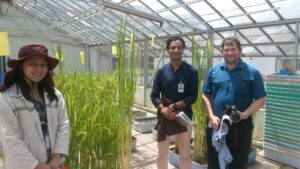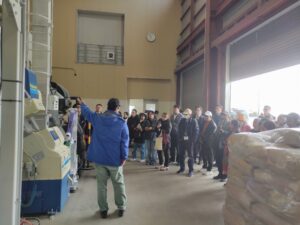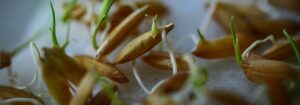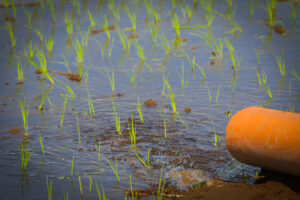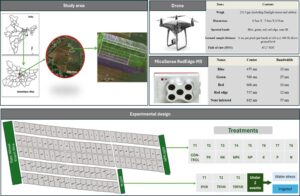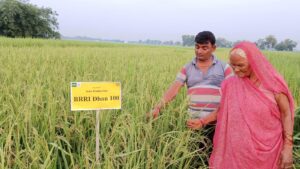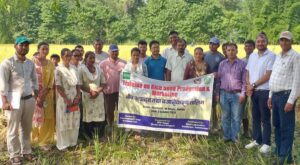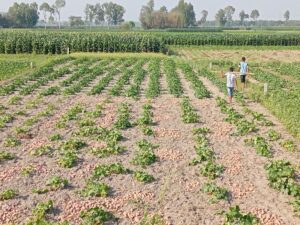The past 40 years have seen major advances in rice improvement for the unique and diverse growing conditions of Latin America and the Caribbean (LAC). The Rice Program of CIAT has contributed greatly, working in collaboration with its many national partners.
In search of an ideal grain
Each new rice variety is an expression of the ideal plant type that the breeder has in mind. This is one of the insights that guided the work of renowned rice scientist Peter Jennings, who led CIAT’s research on the crop in its early years. During a four-decade quest to boost yield potential, CIAT breeders and their partners developed hundreds of rice varieties—some of which demonstrate the steady genetic gains in yield amounting to 3.4 tons per hectare—and accruing over 32 years between the release of CICA 8 in 1978 and the development of the elite line CT21375 in 2010.
This finding comes from an experiment for measuring the amount of increase in performance that is achieved through artificial genetic improvement (or genetic gain) programs designed by the author and Camila Rebolledo, a rice physiologist, at CIAT in Palmira, Colombia. The idea was to evaluate 17 rice varieties (see Figure) grown under the same conditions and agronomic management for two seasons.
The experiment showed genetic gains in yield (an annual average of 106 kilograms per hectare) as well as changes in other traits that characterize the plant types developed over four decades. The resulting rice plants produced more total biomass, are higher yielding, and are more efficient because they waste less energy on unproductive tillers. Instead, these plants produce stems that mostly develop large and fertile panicles with more grains.
The plant type that has guided much of the work of CIAT’s Rice Program since its beginnings was developed at the International Rice Research Institute (IRRI) in the early 1960s and reached CIAT through the variety IR8 (see Breeding history). The design of this plant type allows more sunlight and less lodging (or falling over), and responds efficiently to fertilizer.
In 2002, Dr. Jennings and other researchers proposed to develop another plant type based on results obtained by CIAT’s Rice Program through selection under direct seeding. This plant type has an adequate number of panicles containing more full grains, while staying green longer, thus increasing its productive period, and it has greater height. This experiment showed that combining several traits can effectively raise yield potential in rice—a key aim of CGIAR’s IRRI-led Global Rice Science Partnership (GRiSP).
Outwitting rice diseases
CIAT’s Rice Program has devoted considerable effort to combating pest and disease threats, especially rice hoja blanca virus and rice blast (caused by the fungus Pyricularia oryzae).
Genes conferring resistance to hoja blanca were found in tropical japonica varieties such as Takao Iku 18 and its offspring, Colombia I, as well as in African lines, such as IRAT 120. Just as critical were the methods developed to check rice for resistance to both the virus and its insect vector under controlled conditions.
Dealing with rice blast required an innovative approach designed by Dr. Jennings, which involved combining desirable traits, known as gene pyramiding, through multiple crosses between diverse sources of resistance from plants from different locations.
The idea was to combine different genes that had evolved with the pathogen separately, making the pathogen unable to accumulate all of the virulence genes needed to overcome disease resistance. In addition, rice plants will be selected for resistance under a wide fungus diversity at the Santa Rosa experiment station in Villavicencio, Colombia—a “hotspot” site with exceedingly high levels of rice blast—that has optimal conditions for disease development.
Segregated populations were moved between CIAT headquarters in Palmira—where rice is transplanted, complete irrigation is used, and conditions are very favorable for high yield—and Santa Rosa—where direct seeding is used and rice is grown under rainfed conditions with more stresses, in general, to enable the plants to adapt to wider environments. The results were excellent.
Innovators in abundance
Breeding rice for resistance to rice blast under direct seeding in favorable upland environments led to many useful innovations. One was a system for detecting rice blast, developed and improved by Dr. Carlos Bruzzone, Dr. Edward Pulver, Dr. Jennings, and other researchers. Dr. César Martínez and Dr. Surapong Sarkarung devised an approach for selecting rice in uplands with acid soils. Dr. Martínez also developed superior lines using wild rice relatives, such Oryza rufipogon. Dr. James Gibbons contributed excellent varieties and crosses, including CT8008, which gave rise to more than 12 varieties in Latin America.
Dr. Elcio Guimarães, CIAT’s regional research director for LAC, and Dr. Marc Chatel undertook rice improvement through recurrent selection, using methods developed by the Brazilian Agricultural Research Corporation (Embrapa) and French Center for Agricultural Research for Development (CIRAD).
Manuel Rosero, Federico Cuevas, and Luis Eduardo Berrío disseminated thousands of improved lines through the IRRI International Network for Genetic Evaluation of Rice (INGER), leading to the development of important commercial varieties; Mr. Cuevas and Mr. Berrío also devised a method for delayed harvest under controlled conditions to select for high milling yield.
Plant pathologist Robert Zeigler, now IRRI director general, improved selection methods for rice blast and rice hoja blanca virus. Several innovative concepts, such as lineage exclusion, were introduced by Purdue University Professor Morris Levi and Fernando Correa, currently with RiceTec Solutions, to facilitate the development of blast-resistant varieties. Economist Luis Sanint conceived and played a critical role in creating the Latin American Fund for Irrigated Rice (FLAR), which works with rice organizations across the region through plant breeding and other activities in an integrated approach designed to make the sector more competitive.
Tangible results of CIAT’s and FLAR’s ongoing collaboration with Colombia’s National Rice Growers Federation (Fedearroz), which focuses on improving yields, grain quality, and disease resistance, while stabilizing production, include varieties such as Fedearroz 50, Fedearroz 2000, Fedearroz 60, and Fedearroz 174. Edgar Corredor, Pompilio Gutiérrez, James Gibbons, and Luis Berrío all contributed importantly to this work.
Recent years have placed new demands on rice research, including greater resilience in the face of the impacts of climate change, higher yield potential, superb grain quality, and more competitive rice sectors overall. A new generation of rice researchers has arisen to confront these challenges, benefiting from new tools and more abundant information. Even so, they still look to the past for inspiration in confronting future challenges.
__________________
Edgar Torres is leader of the Rice Program at CIAT.

